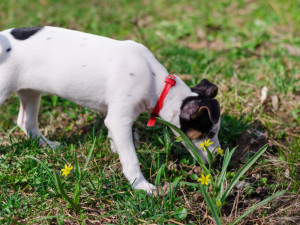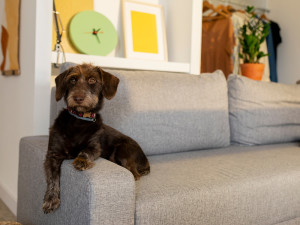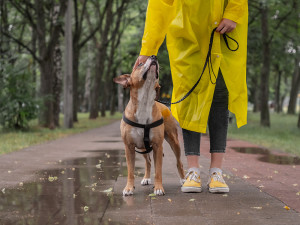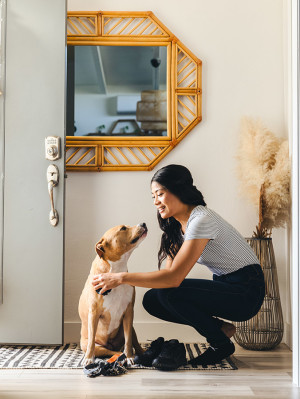Why You Should Take Your Pup on a “Scent Walk”—All the Dogs Are Doing It
Why you should let your dog get all their sniffs out on a stroll.
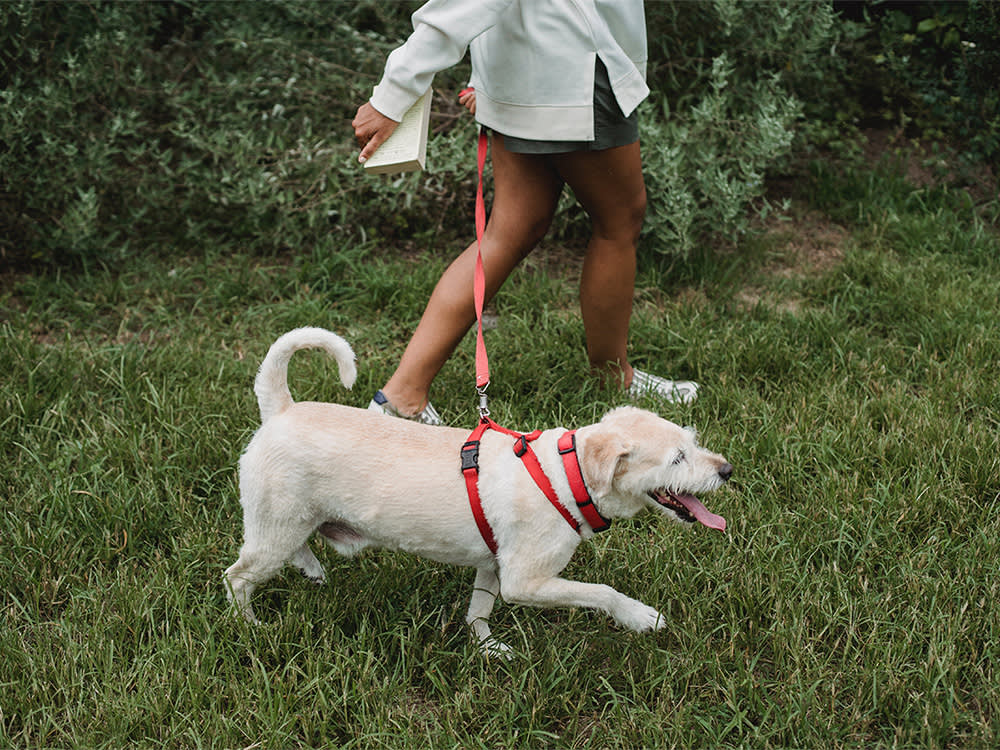
Share Article
A friend once told me that, for dogs, sniffing an especially odorous patch of grass is akin to what humans experience when we listen to a great symphony. They are transfixed by the opening scent sonata of earthiness, moved by the petrichor adagio of rainfall, thrilled by the cheeky minuet of another dog’s urine.
Given that this comparison was made at a party and hedged with statements like “I definitely read it somewhere…. I don’t remember where….” I’d take it with a grain of salt. But there’s no denying dogs love to sniff. (Especially, it seems, when we’re trying to hurry them along on a walk.) While we tend to think of food, exercise, wellness, and socialization as key to our pup’s wellbeing, we often don’t think about the benefits that can be had by letting them just follow their nose.

Save on the litter with color-changing tech that helps you better care for your cat.
Enter the scent walk. Also known as a “smell walk,” a “sniff walk,” a “decompression walk,” or, as certified professional behaviorist and trainer Karen London calls it, a “sniffari,” the premise is simple: Take your dog on a leisurely walk and let them sniff whatever catches their fancy.
“Just for the quality of life of the dog, it’s tremendous,” says Robert Haussmann, a member of Kinship’s Expert Collective and the certified professional dog trainer and behaviorist who founded Dogboy NYCopens in new tab.
Here’s what to know about why scent walks are so beneficial — and how you can incorporate them into your routine.
Dogs Are Built to Smell
Dogs have been trained to sniff out bombs, money, drugs, avalanche survivors, even certain illnesses. But even a little couch-potato pup is equipped with a wildly advanced smelling apparatus. According to the American Kennel Clubopens in new tab, roughly one-eighth of a dog’s brain is dedicated to interpreting odors. That’s 40 times more mental real estate dedicated to smelling than humans.
By making time for your dog to take in different smells, you’re making time for them to do the thing they were built to do. And that, Haussmann says, can be invaluable for maintaining a dog’s wellbeing.
“How exactly is it enriching?” he says. “How is it enriching to expose a child to music, or art? The brain is designed for creativity. Humans are creators and builders, and dogs are sniffers.”
All Dogs Will Love Scent Walks
How do you know if your dog would benefit from a scent walk? The simple answer: If they’re a dog. Haussmann says he’s recommended the practice to a variety of clients. “It could be something that’s an ancillary support to any kind of behavior therapy you might be doing for anxious dogs or dogs who have a misplaced or overactive drive of one kind or another. For any old dog, it’s a great way to engage this superpower that we barely comprehend.”
Haussmann says he especially likes recommending scent walks to clients with older dogs who might not have the same physical stamina or ability to enjoy long hikes or boisterous visits to the park. He used to take his own beloved late dog Max on scent walks, even after Max started developing dog dementia and losing some of his faculties. “We would spend a lot of time letting him stick his nose in dirt and really have at it, just because I was like, What’s he got going on? I felt it was something I could do for him.”
Take Scent Walks Whenever You Want
There’s no wrong way to do a scent walk. As long as you’re letting your dog get in some good sniffs, you’re doing a scent walk. You could set aside some time in the evening to take your dog on a smell tour of the neighborhood, or you could tack on 10 minutes just for sniffing at the end of your regular walk — whatever works best for you, your dog, and your schedule. Even if you have a yard that your dog enjoys inspecting, it’s still worth taking them on a walk around the block so they can take in the sights, sounds, and smells.
Haussmann cautions that some dogs are too ramped up in the mornings to do a contemplative scent walk. If that’s the case, just find a better time. “I usually say an evening walk might be a nice time. It’s not crazy busy, there’s not a ton of people and dogs out. Maybe you can just stroll around for a bit and let them explore.”
Or Take It Inside
As anyone who has dragged their unhappy dog along a cold, rainy sidewalk knows, nature doesn’t always allow for leisurely walks. When the weather doesn’t permit, you can still help your dog flex their sniffing muscles by setting up some easy smelling tasks inside. Haussmann recommends having your dog stay in a different room, and then hiding bits of their food around your space for them to scavenge for.
“You’re feeding the dog twice a day anyway,” Haussmann said. “You might as well make five minutes of that a fun game for them.”
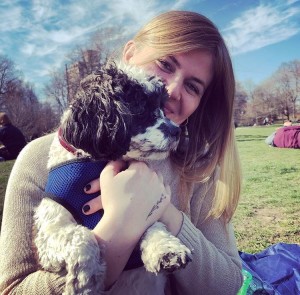
Madeleine Aggeler
Madeleine Aggeler is a freelance journalist and copywriter in Washington, D.C. Previously, she was a writer at New York magazine’s The Cut. She lives with her dog, Cleo, who works primarily as a foot warmer.
Related articles
![Woman walking her dog in a park]()
Dog Walking 101: How Often Should You Walk Your Dog?
And why you shouldn’t skip the longer routes.
![Woman greets dog with leash and collar in doorway]()
8 Helpful Tips for Pet Parents
Save time on boring tasks and spend it enjoying your dog
![Dachshund dog freezing on a rock during a walk]()
Why Does My Dog Turn Into a Statue on Walks?
Suddenly, your neighborhood sidewalk has some new installation art: your frozen dog.
